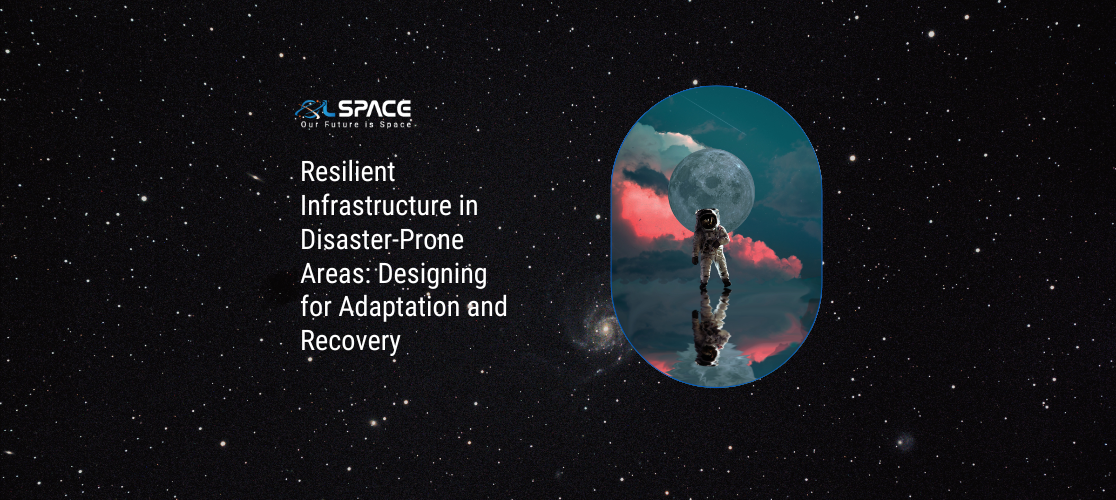04 July 2023
Resilient Infrastructure in Disaster-Prone Areas: Designing for Adaptation and Recovery

Disaster-prone areas are susceptible to various natural hasards such as hurricanes, earthquakes, floods, and wildfires. In these regions, building resilient infrastructure is of paramount importance to ensure the safety and well-being of communities and to minimise the impact of disasters. By designing infrastructure that can adapt and recover from disasters, we can create a more resilient built environment. This blog post explores the significance of resilient infrastructure in disaster-prone areas and highlights key principles for designing infrastructure that can withstand and recover from natural disasters.
Understanding the Local Hasards: Designing resilient infrastructure starts with a comprehensive understanding of the specific hasards prevalent in the area. By conducting thorough risk assessments and analysing historical data, engineers and urban planners can identify the types and intensities of hasards that the infrastructure may face. This knowledge forms the basis for designing structures and systems that can withstand and mitigate the effects of these hasards.
Incorporating Climate Change Considerations: In the face of climate change, it is crucial to consider future scenarios and potential increases in the frequency and intensity of natural disasters. Resilient infrastructure design takes into account climate change projections to ensure that the infrastructure can adapt and remain functional in the face of evolving environmental conditions. This may involve incorporating climate-responsive materials, designing for increased rainfall or storm surge, and considering rising sea levels.
Robust Structural Design and Materials: Resilient infrastructure requires robust structural design and the use of durable materials. Buildings and critical infrastructure should be designed to withstand the forces exerted by natural hasards, such as strong winds, seismic activity, or flooding. This may involve reinforcing foundations, using impact-resistant materials, and incorporating structural systems that can absorb and dissipate energy. By ensuring the integrity of the infrastructure, it can better resist damage and maintain functionality during and after a disaster.
Redundancy and Backup Systems: Resilient infrastructure incorporates redundancy and backup systems to ensure continuity of essential services during and after a disaster. This may involve redundant power supply systems, alternative water sources, and backup communication networks. By diversifying and duplicating critical systems, infrastructure can continue to function even if one component fails or is compromised. Redundancy and backup systems enhance the ability of communities to recover quickly and maintain essential services.
Integrated Land Use Planning: Resilient infrastructure design goes hand in hand with integrated land use planning. By considering the location and layout of infrastructure in relation to potential hasards, communities can reduce vulnerability and enhance resilience. This may involve zoning regulations, land-use restrictions, and the establishment of buffer zones or green spaces to absorb and mitigate the impacts of disasters. Integrated land use planning ensures that infrastructure is appropriately sited, minimising exposure to hasards and optimising recovery efforts.
Community Engagement and Education: Building resilient infrastructure requires active community engagement and education. By involving local communities in the design and planning process, their knowledge and perspectives can be integrated into infrastructure solutions. Additionally, educating communities on disaster preparedness, early warning systems, and evacuation procedures empowers individuals to take appropriate actions during emergencies. Community engagement and education foster a collective sense of responsibility and resilience, strengthening the overall response and recovery capacity.
Conclusion: Resilient infrastructure design is crucial for mitigating the impact of natural disasters in disaster-prone areas. By understanding local hasards, considering climate change projections, employing robust structural design and materials, incorporating redundancy and backup systems, integrating land use planning, and engaging communities, we can create infrastructure that is adaptable, durable, and capable of recovering from disasters. Investing in resilient infrastructure not only protects lives and property but also promotes sustainable development and ensures the long-term well-being of communities in disaster-prone areas.
Join our community and never miss an update! Subscribe to our newsletter and blog to stay up-to-date on the latest trends, tips, and insights in your area of interest. Don’t miss out on exclusive content and promotions. Sign up now and be a part of our growing community!
